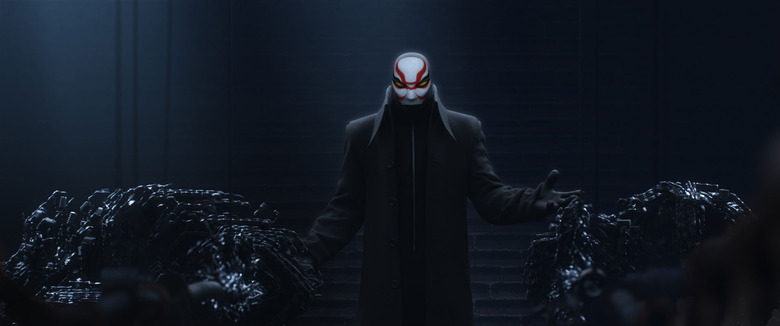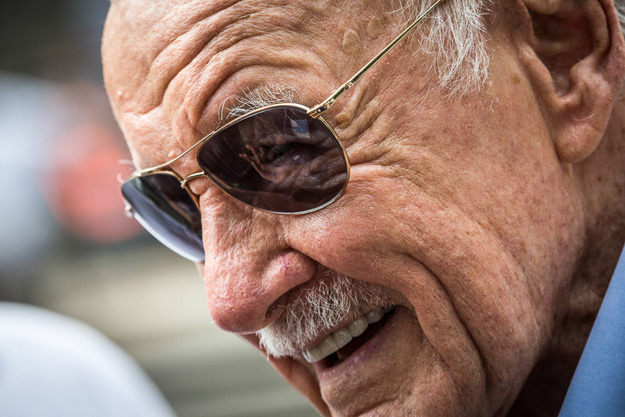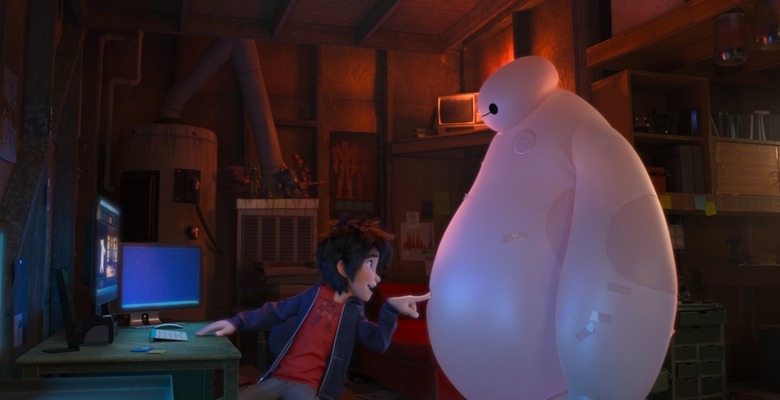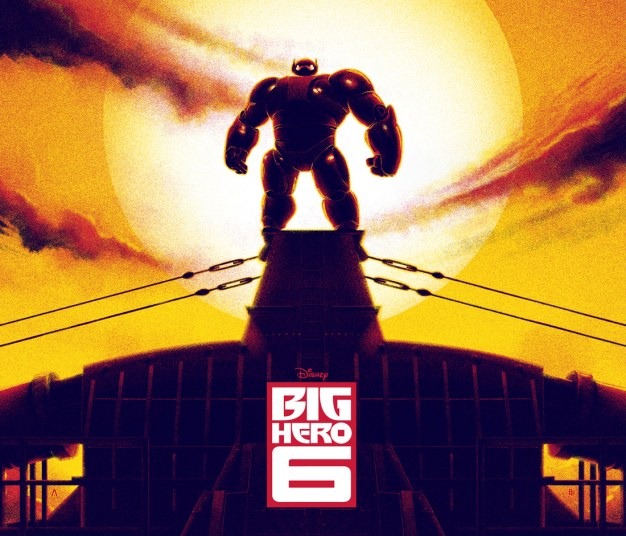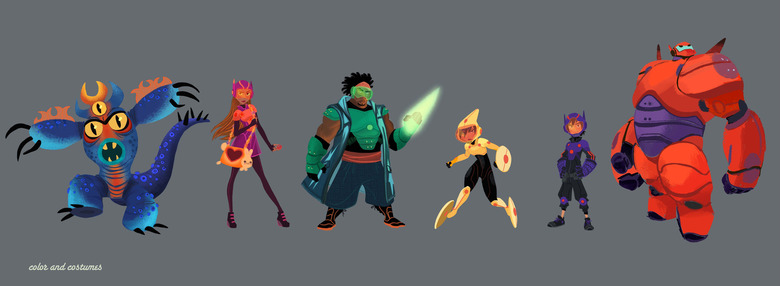Spoilers! Your Six 'Big Hero 6' Burning Questions Answered By The Directors
The success of Disney Animation continued this weekend with the release of Big Hero 6. A loose adaptation of a Marvel Comic of the same name, the fast-paced, emotional action film follows a young boy named Hiro who employs his older brother's health robot Baymax to help track down a mysterious villain.
That's the non-spoiler way to describe it. But with the movie now in theaters, and already a hit, it's time to talk spoilers. Speaking with the film's directors Don Hall and Chris Williams, we asked about a bunch of the super spoilery questions you probably had after watching the film. Character motivations, ultimate fates, potential plot holes, cameos and more. Below, the directors answer your Big Hero 6 questions.
Big Hero 6 Questions Answered
Beware of major spoilers for the rest of this article.
1. Since the villain, Callahan, didn't know about Hiro's Microbots until the science fair, how did he develop his devious plan so incredibly quickly?
Chris Williams: Well you never want that stuff to supersede the emotional story. You know what I mean? Like the bot mechanics. You never want to come at the expense of the actual throughline of the story. But we did talk about it. We tried to make it as sort of airtight as possible. We did talk about the fact that the after Hiro presents his Microbots, we really nuanced that acting when he's applauding at the end. So that it can be perceived when you look at it the first time, it's like 'Oh he's impressed by the show.'Don Hall: Yeah.Williams: You watch it another time, you're like 'Oh he sees how he's going to destroy his nemesis.'Hall: The birth of his evil idea. So a lot of care went into the right angle of the eyebrow and everything. But yeah, there were versions of the story where we did focus a little bit more on that and it came at the expense of the emotional story. And the Hiro-Baymax story is the most important thing. So those plotty threads, you sure up as much as you can. And no matter what, emotionally, the idea of the villain going or reacting to loss was always central to the story. We wanted to mirror Hiro's story and almost be a cautionary tale of what can happen if you let hatred kind of crush your soul.
2. When Baymax "dies," he doesn't really die because his personality is all on that chip. How much did you consider the notion this is a kids movie and they may or may not understand that technological explanation?
Williams: In Tadashi's explanation, he talks about that chip is what makes Baymax Baymax. Then just symbolically the fact that it's sitting where your heart sits. I think people seem to be able to ingest and understand the idea that that is his essence, and that by holding onto the chip that he is still himself at the end of the movie.Hall: But even the idea of it's interesting. We screened the movie and get feedback and stuff like that internally. And some people who are a little bit more empirical minded and logic minded would always say "Well he's a robot, you can always rebuild him." But we're hoping that the audience doesn't think about that. They're thinking of Baymax as a character, not as a robot. If they thought a robot is a robot, then that's not gonna be as emotional. But he's a character by that point. So you forgot that he could be rebuilt. And so "The Sweet Cookie" we call it when Hiro finds that chip again, your heart should elate because you know what made Baymax Baymax is still there..Williams: And there's no way you can rebuild sort of the experiences they've had together.Hall: Exactly.Williams: The bond they share. The amount that Baymax has learned over the course of the story. That's something you can't just replicate. I think that's why, you know, Baymax seemingly is gone at the end of the film.Hall: Also he has learned and that is on that chip. We've shown that he's had a little bit of a learning curve over the course of the film. And grown to, in his own robotic way, love and care for Hiro.
3. Your film has the two main traits of a Marvel movie - the ends credits scene and the Stan Lee cameo. How did the cameo develop?
Williams: I think it was always assumed there would be something in that manner.Hall: We always wanted it. Like Chris says, it was assumed we were gonna do it. But it was hard to find a place to fit it in there so that it didn't stick out and that it was humorous, you know? 'Cause he's been, what? A truck driver, a security guard, whatever he was in Guardians of the Galaxy, a flirtatious Hugh Hefner type guy. He's been everything. So yeah, we're always looking for a place to do it. And when the story integrated this idea that Fred would be like this uber fanboy, we just thought, "God, that would be fun."Williams: With considerable means.Hall: Yeah, of considerable means of wealth. How funny would it be if his Father bore an uncanny resemblance to Stan Lee?
4. When Baymax turns bad, that's a very dark moment for a Disney movie. How far did you think you could push that?
Hall: What's interesting is, we took a whack at that scene and I remember when we showed John [Lasseter] the storyboards for it, he pushed us to go farther. He's like "No, no, no." And then he started acting it out. I was sitting right next to him. He stood up "And Baymax should move quick like THIS." And put his fist right at my face and scared me. He really pushed us. He just felt like to make your point, you need to really push the scene. And so we kept at it. And even as late as scoring the scene, you know, in the mix, we listened to it and there are versions where it was a more action cue. And it didn't have that pathos. And so Henry [Jackman] did another cue where it was emotional. And that's when it was like 'Oh my God, this is ripping my heart out.' And then as late as the mix, which happened a couple weeks ago, the decision was made to take all the sound effects out. And just let it be score. And it just seems to really...Williams: It's really arresting.Hall: Yeah, it's really arresting and it really hits you in a pretty deep emotional place. So we're proud of that scene.Williams: Yeah, and we always knew there was gonna be this idea that Hiro was going to inherit his brother's nurse robot and have intentions to turn him into something else. So he was gonna be armoring Baymax and weaponizing him and turning him into something that is the antithesis of what Tadashi intended him for. And we knew that would actually be the source of a lot of fun, a lot of comedy through the second act. But at the same time, we knew it was gonna have to result in a scene like that. There was gonna have to be a moment where Hiro was confronted by the idea and we were confronted by the idea that this is a corruption of Tadashi's memory. And so it has that power. Almost this awful inevitability that it was gonna happen. But it was a challenge to suddenly break for the first time from Hiro and what he wanted. We were asking the audience to distance themselves from the protagonist. And very suddenly. And that's not easy. Because you're cheering for Hiro, you're cheering for Baymax. Now you don't want what they want. And so the music was very critical to telling the audience, "This is not good. You shouldn't be cheering for this." And reminding them, this is a violation of Tadashi's memory.Hall: And also Callaghan's callousness, you know? I think gave it a little validation. You're certainly not with Hiro at all, but you have empathy without sympathy. You understand why he made that choice, but that's not the choice you would make and that's not the choice you wanted him to make. But you understand why he made it.
5. The film doesn't have a title card until the end, mostly because they haven't earned it yet. Does opening a movie without a title card present any unique challenges?
Williams: Hmm, yeah, boy, I've seen so many different approaches to getting into a movie. It feels like at this point anything is fair game. We really wanted to invite people into the world. That was the thing we really wanted to do initially is invite people into the world, have them get their bearings. We're in a place called San Fransokyo. We're not on Earth as we know it. That was really the first thing we wanted to do. And just coming out of the clouds and establishing the bridge and seeing there was a different aesthetic to the bridge and then being taken through the city. That was really critical. We talked about if we just dropped right into Hiro. The first shot had Hiro in it. You'd see Hiro and you'd be spending a fair amount of time trying to figure out "Where the heck am I?" You know what I mean? And in a distracting way.Hall: Yeah.Williams: So we realized it was important to have those initial shots just to get your bearings.Hall: Yeah, you had to set the world first and you know what's interesting? A lot of times in the creation of these films, our process the stuff at the beginning of the movie? That's the last stuff you do. And John always says that. "Don't worry as much about the beginning of the movie. Figure out your story, which is essentially act 2 and your climax. And then it'll inform you where to start your story." And so that was some of the last stuff that we did. And I remember at one point, because we didn't put a ton of thought into where the titles were gonna be. In all honesty. And then at one point, John kind of turned to us and said, "So we're not doing a title up front?" We're like "Nah, we're gonna do it at the end." And he was like "Okay." You know, it was literally that simple because I think it made sense to him. Like you said, they earned it. They earned the title "Big Hero 6" by the end of the film. That's where it made the most sense.Williams: Yeah, and we did have many different versions of the opening and 'cause, you know, I think you know we kind of work in a very iterative way. We make screening after screening, internal screening after internal screening. And it allows us to try many versions of every scene. It allows the structure to evolve. And so yeah, every movie we make, there are many versions of the opening and till you find the right one that supports the end of the movie.
6. The film's story coninutes in the end credits with the good doings of Big Hero 6. Is that developed like every other piece of the story?
Williams: Well we did talk a lot about it. Creating the end credits was one of the last things we did. We talked about how much we wanted to get into their further exploits. And we did say that this is a world that didn't have superheroes before, unlike Marvel movies where you're in a world that where superheroes are a preexisting condition. In our world, there is no such thing. They're the first. So we knew we didn't wanna populate the end credits with these new supervillains or anything. It wasn't gonna be like that. So they feature more things like they're stopping out of control streetcar and things like that. We didn't want to invite such a drastic new storyline in the end credits.Hall: Yeah, 'cause if you put, you know, a new supervillain, you're gonna–Williams: Yeah, that's a different movie.Hall: It's almost like no, you just gotta kind of let it be a little bit more general. And really focus more on them as friends. Actually most of the credits are them hanging out in a café, you know, like that stuff.

